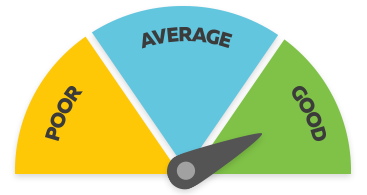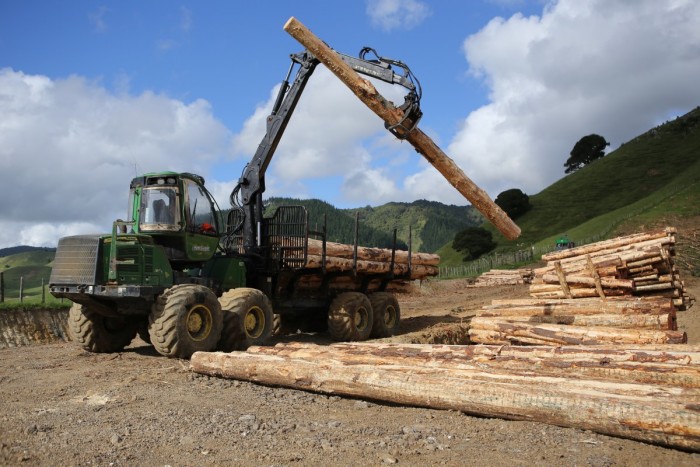Forestry and Logging Worker
Kaimahi Waonui/Tope Rākau
Alternative titles for this job
Forestry and logging workers plant, maintain, measure, cut and clear trees from forests.
Pay
Trainee forestry and logging workers usually earn
$49K-$65K per year
Qualified forestry and logging workers usually earn
$65K-$75K per year
Source: Forestry Careers NZ, 2020.
Job opportunities
Pay
Pay for forestry and logging workers varies depending on experience.
- Entry-level forestry and logging workers usually earn $49,000 or more a year.
- Those working towards qualifications usually earn between $49,000 and $65,000.
- Forestry and logging workers qualified in an area of logging, such as tree felling or machine operating to Level 3, usually earn between $65,000 and $75,000.
- Crew managers and specialised operators may earn between $100,000 and $120,000.
Forestry silviculture workers are usually paid on a piece-rate basis – for example, when pruning they are paid a set amount for every tree they prune.
Source: Forestry Careers NZ, 2020.
- PAYE.net.nz website - use this calculator to convert pay and salary information
- Employment New Zealand website - information about minimum wage rates
(This information is a guide only. Find out more about the sources of our pay information)
What you will do
Forestry and logging workers may do some or all of the following:
- prepare and maintain the ground surrounding trees
- plant, prune and thin trees
- monitor and measure the growth of trees
- gather aerial data about a tree crop
- select and cut down trees
- use harvesting machinery to drag logs from the bush and remove branches from logs
- operate loaders to move logs into stacks or to load trucks
- assess log quality, and cut to size
- measure and grade logs
- maintain and repair chainsaws and equipment.
Skills and knowledge
Forestry and logging workers need to have:
- knowledge of tree and timber types
- knowledge of tree pruning, felling, cutting and trimming methods
- knowledge of health and safety requirements in the forest, including first aid skills
- skill in operating machines and using technology such as drones
- chainsaw operation skills
- mechanical skills
- heavy vehicle handling skills
- firefighting skills.
Working conditions
Forestry and logging workers:
- usually work from 6am to 4pm week days, and may work on Saturdays
- work in forests, bush and scrubland in rural or isolated areas, and may have to travel up to an hour to their workplaces
- work in all weather conditions, and their working environment may be hazardous and noisy.
Entry requirements
There are no specific requirements to become a forestry and logging worker.
However, you can complete a New Zealand Certificate in Forestry Operations (Level 3) while working. This can be done as part of an apprenticeship.
Secondary education
There are no specific secondary education requirements to become a forestry and logging worker. However, agriculture and horticulture, construction and mechanical technologies, and maths and English are useful.
Personal requirements
Forestry and logging workers need to be:
- practical
- motivated and hard-working
- safety-conscious
- able to make good judgements
- able to work well under pressure
- able to work as part of a team.
Useful experience
Useful experience for forestry and logging workers includes:
- timber mill work
- work as a volunteer firefighter
- experience driving heavy vehicles
- farm work.
Physical requirements
Forestry and logging workers need to be reasonably fit, healthy and strong as they need to move and set up equipment on logging sites. They also need to have quick reactions, good hand-eye co-ordination and a good level of stamina.
Find out more about training
- Competenz
- 0800 526 1800 - info@competenz.org.nz - www.competenz.org.nz
What are the chances of getting a job?
Strong demand for forestry and logging workers
Demand for forestry and logging workers in harvesting and silviculture (planting and pruning) is good because:
- private forest plantings from the 1990s onwards are now reaching maturity, so more forestry and logging workers are needed for harvesting and replanting
- a number of forestry and logging workers are reaching retirement age, but not enough people are coming through to replace them
- the Government is investing in forestry research and sustainable forestry programmes to increase the plantation area on land suitable for growing forests. Forestry and logging workers are needed to help with this.
According to the Census, 4,827 forestry and logging workers worked in New Zealand in 2018.
Technological skills an advantage for forestry and logging workers
It's an advantage for forestry and logging workers to have technical skills and experience because the job is becoming increasingly mechanised.
It's possible to learn these skills on the job or get support for training. Some of the technical skills you can learn as a forestry and logging worker include:
- operating drones for forest aerial survey work
- using apps for gathering data such as cubic metres of logs processed
- controlling operator-free machines remotely.
Range of ways to improve chances of getting into training
You can improve your chances of being trained as a forestry and logging worker if you have:
- a positive attitude, a willingness to learn, and a strong work ethic
- transferable skills such as experience operating machines
- good teamwork skills.
Most employers of forestry and logging workers are contractors
Forestry and logging workers are usually employed by forestry contractors, who work for forest management companies.
Sources
- Competenz website, accessed June 2020, (www.competenz.org.nz).
- Forestry Careers NZ, ‘Forest Manager (Forester)’, accessed June 2020, (www.forestrycareers.nz).
- Forestry Careers NZ, ‘Manual Tree Faller’, accessed June 2020, (www.forestrycareers.nz).
- Forest Owners Association website, accessed June 2020, (www.nzfoa.org.nz).
- Farm Forestry New Zealand website, accessed June 2020, (www.nzffa.org.nz).
- Ministry for Primary Industries, 'Planting One Billion Trees', accessed July 2018, (www.mpi.govt.nz).
- New Zealand Institute of Forestry website, accessed June 2020, (www.nzif.org.nz).
- Stats NZ, '2018 Census Data', 2019.
- Waldegrave, J, managing director, NZ Forestry, careers.govt.nz interview, July 2018.
- Younger, P, chief executive, Forest Industry Contractors Association, careers.govt.nz interview, June 2020.
(This information is a guide only. Find out more about the sources of our job opportunities information)
Progression and specialisations
Forestry and logging workers can progress to manage their own crew and become forestry contractors.
Forestry and logging workers usually specialise in one of three areas of forestry:
- Forest Mensuration Worker
- Forest mensuration workers may either measure standing trees to work out their size and value, or measure logs in the forest, at wharves or sawmills, to ensure that the logs meet clients' needs.
- Forestry Harvesting Worker
- Forestry harvesting workers cut and clear trees from forests.
- Forestry Silviculture Worker
- Forestry silviculture workers plant, prune, thin and release trees in a forest.
Last updated 27 March 2025


